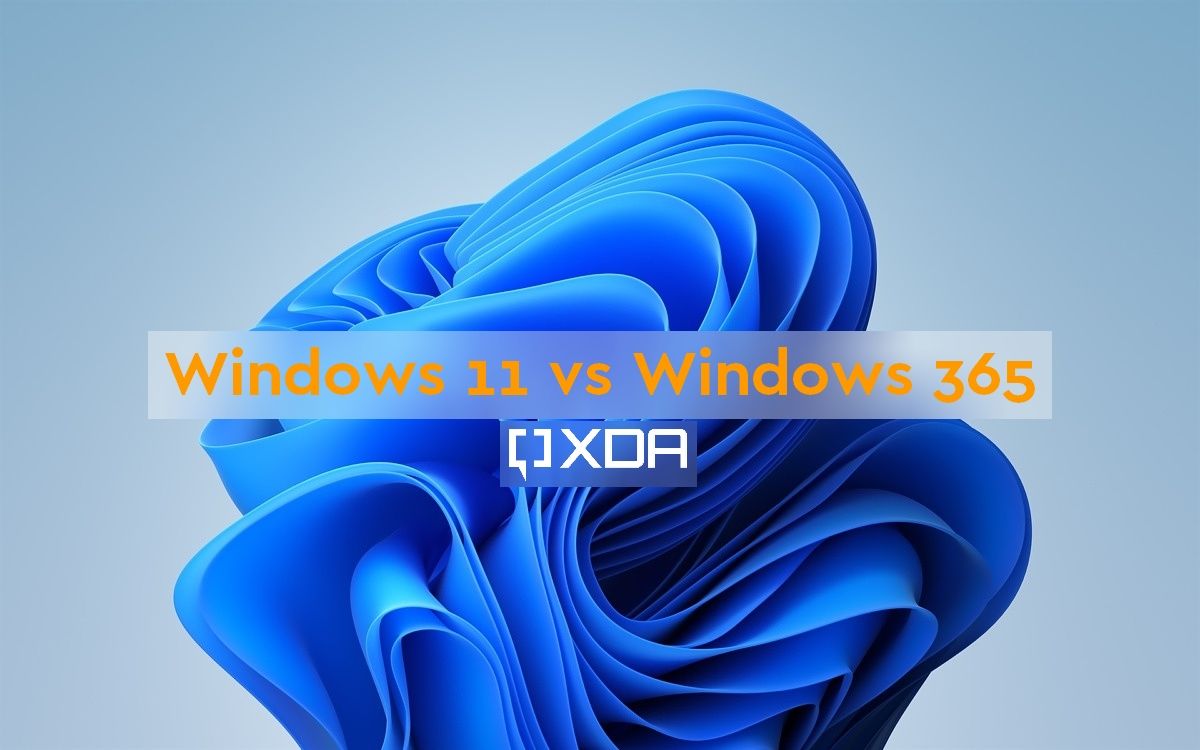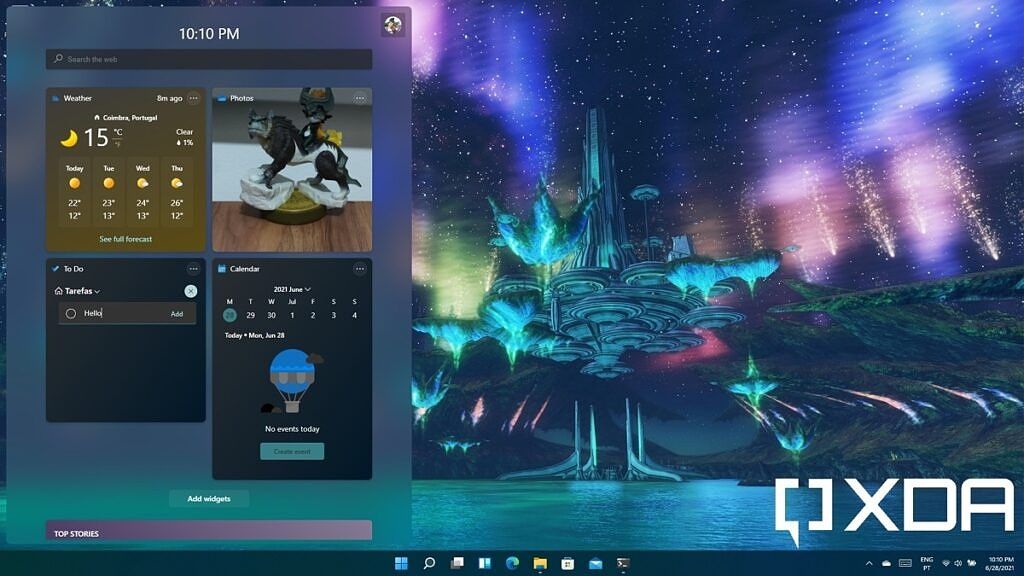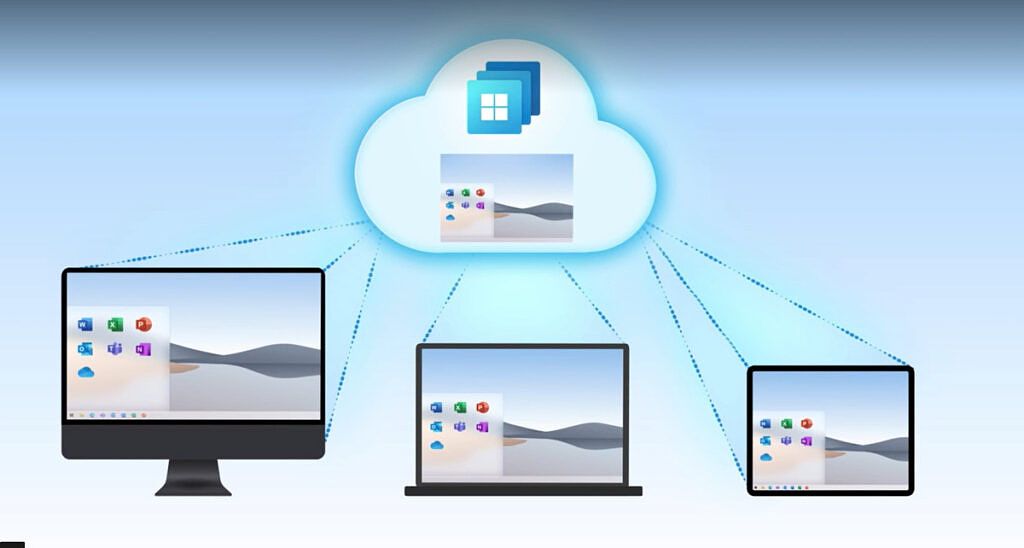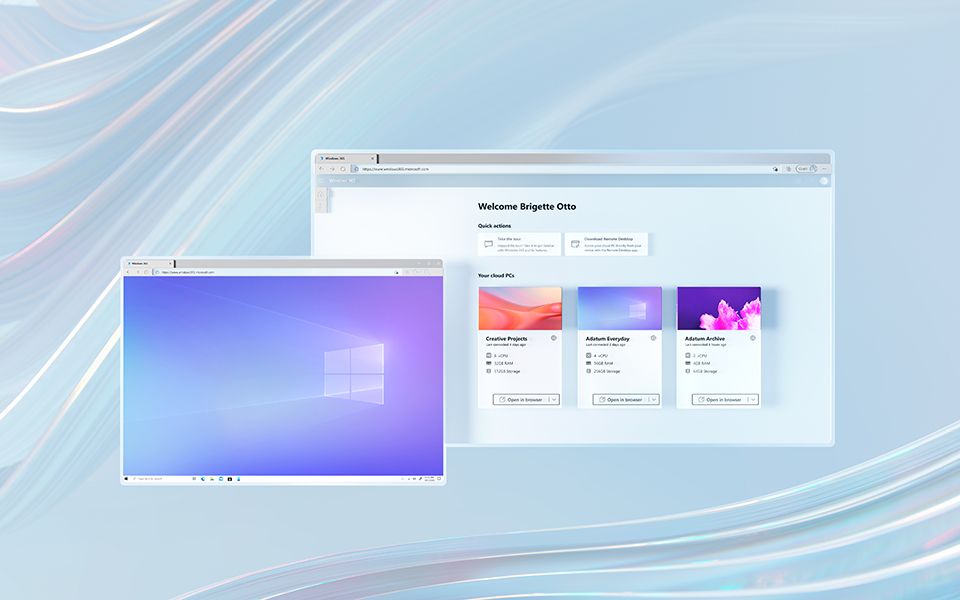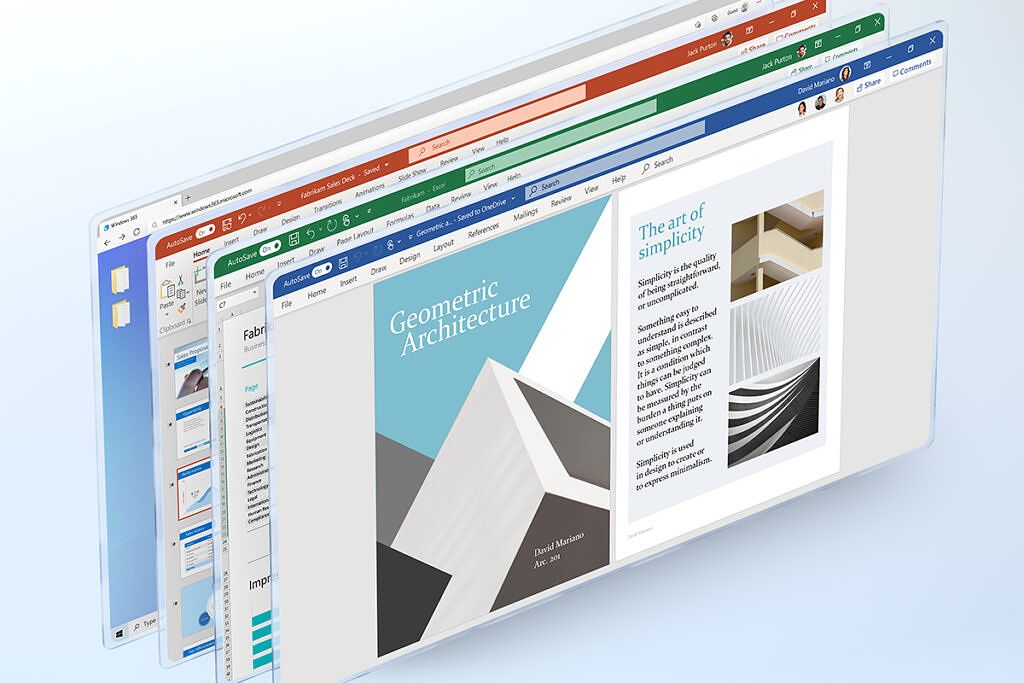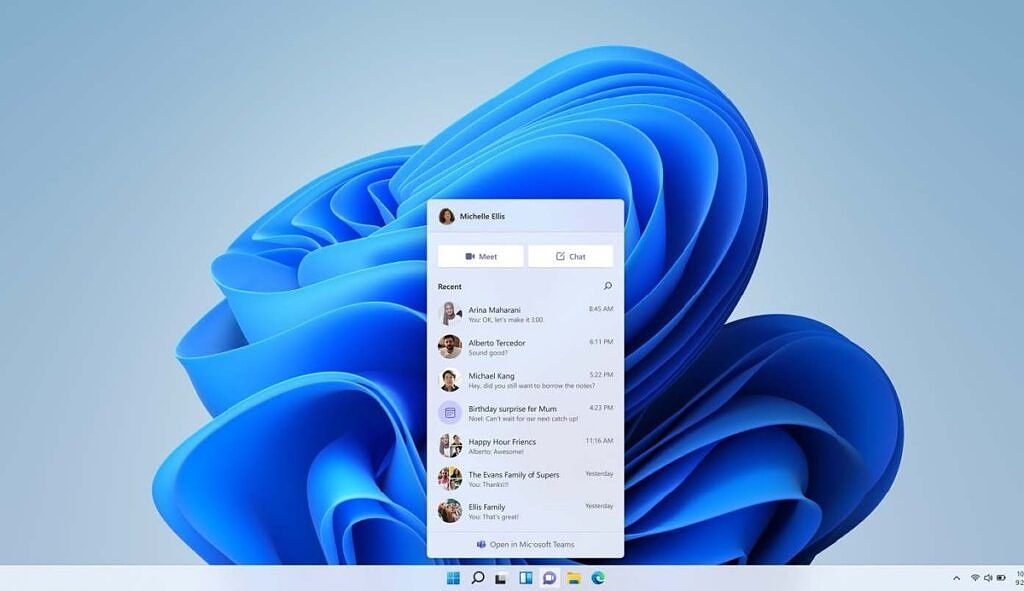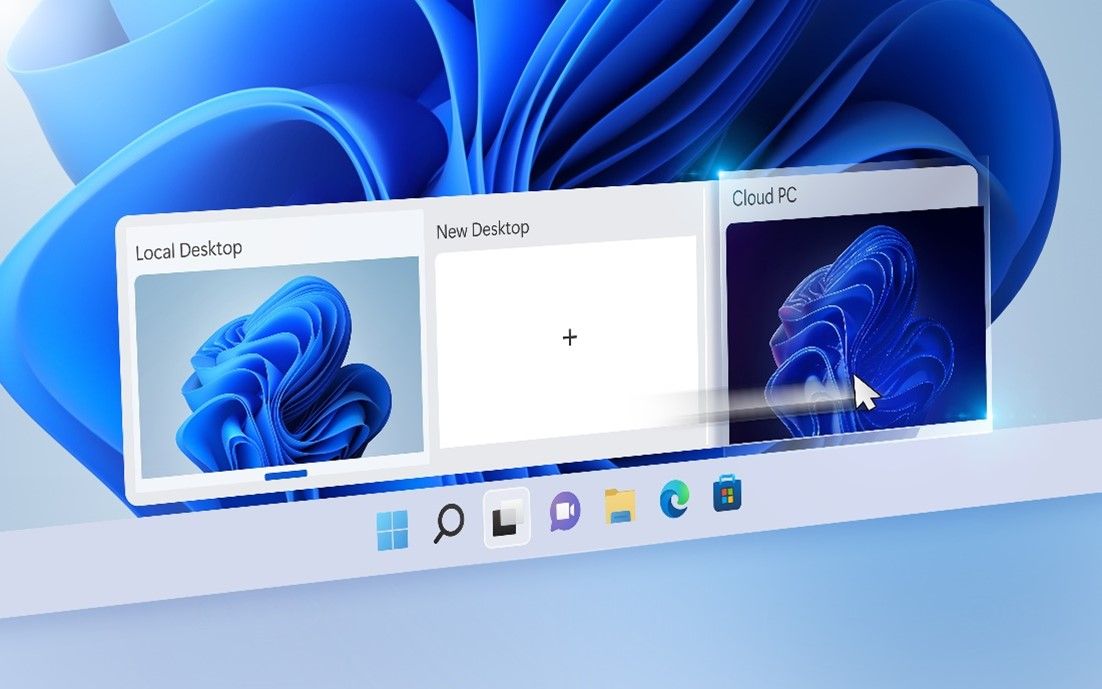The PC landscape is always evolving and changing, and Microsoft consistently launches new products, which can sometimes get confusing. One example has to do with Windows 11 and Windows 365, both of which were announced and launched in 2021. It may not be immediately obvious what's different, but in fact, these are radically different concepts.
The gist of it is that Windows 11 is an operating system, just like Windows 10, 8.1, 7, and others before it. It's software you install on your PC and the home to everything you do on it. Meanwhile, Windows 365 is a subscription service based on the cloud, and it's currently only meant for business users. A consumer version has been reported to be in the works, but there's no confirmation on this yet.
What is Windows 11?
Let's start with the simpler one, Windows 11. Microsoft announced Windows 11 at an online event on June 24, 2021, as Windows 10's successor. It came with a lot of changes to the OS, a lot of them visual. For example, there's a brand-new Start menu that no longer uses Live Tiles. Plus, that Start menu is now in the center of the screen by default. There are rounded corners for basically every app, the File Explorer has a revamped UI and much more.
Windows 11 also adds new features, like the new Widgets panel, which gives you glanceable information for things like weather, your calendar events, and so on. There's also support for running Android apps on Windows 11, along with many other improvements that made their debut at launch, but also over time with updates like version 22H2 and version 23H2 (yet to be released at the time of writing).
Windows 11 also comes with new system requirements, which were pretty controversial when it was first announced. You need a fairly recent CPU to be officially supported, and that CPU has to be based on the x64 architecture since there's no 32-bit version of Windows 11. What's more, you'll need at least 4GB of RAM and 64GB of storage to install Windows 11.
But that's where the key differences between Windows 11 and Windows 365 show up. Windows 11 is something you install on your PC, so you need to meet certain requirements to run it. Windows 11 comes in a few editions, or SKUs, for different types of scenarios. Most laptops you'll see on store shelves probably have Windows 11 Home, but you may also see Windows 11 Pro. There's also Windows 11 Enterprise and Education for specific use cases and even more specific options like Windows 11 Pro for Workstations. These versions have different licensing models depending on the target audience.
What is Windows 365?
Unlike Windows 11, Windows 365 is a subscription service. It's not something you install and run on your PC. Instead, Windows 365 is a service that allows you to create and run PCs remotely. It's something of a hybrid between a virtual machine and Microsoft Remote Desktop; Microsoft calls it a Cloud PC.
Essentially, with Windows 365, you can create a Windows PC on Microsoft's servers and then connect to it from wherever you want. However, that PC is still your PC. You can install apps on it and run them as usual. The difference is that you can access those apps from anywhere. Imagine a remote desktop connection, except you don't need to have a desktop to connect to. You just log into Windows 365 on any device, and you choose the PC you want to connect to. It's always available, and all your apps and files are always there.
At the same time, it's a virtual machine, but it's not using all those system resources on your PC. You don't have to worry about how much RAM or storage to allocate to it because it's not running on your device. You're just accessing it through the internet.
Windows 365 allows you to create Cloud PCs that run either Windows 10 or Windows 11, so it's not tied to Windows 11 specifically. Being that it's a service, you pay a monthly fee based on the hardware configuration you want your PC to have. For example, the cheapest plan includes a PC with two virtual CPU cores, 4GB of RAM, and 64GB of storage for $28 per user per month, but it can go much higher depending on the specs you choose.
Which should I choose?
Choosing between Windows 11 and Windows 365 is entirely based on your needs, and for most people, Microsoft makes that decision for you. Windows 365 is a service for businesses, not general consumers. The person going into the store to buy one of the best new Windows laptops is just going to get Windows 11, and that's the end of it. You can't just sign up for Windows 365 as an individual, either, at least not for now. It's been reported that Microsoft eventually wants something like Windows 365 for consumers, but that hasn't happened yet.
For businesses, choosing between the two is dependent on how much you value mobility and hybrid work. The cost of Windows 365 over a two-year period is higher than a physical PC with comparable specs. If you're buying only a few PCs for users who come into the office every day, Windows 365 probably doesn't make sense.
However, with Windows 365, you can access that PC at any time from any device. As a manager, you don't need to send devices to people working remotely because they can just access their PC from whatever machine they have at hand.
Microsoft shared an example of the Government of Nunavut, a Canadian territory, which had to deploy 3,100 machines to workers using airplanes. With Windows 365, that could have been avoided because workers can access their PC from anywhere they are. That saves money in transportation and logistics, but it also saves time. Windows 365 PCs can be set up quickly and without waiting for hardware to be shipped.
When were they launched, and how much do they cost?
As we've already explained, Windows 365 and Windows 11 are very different things, and they launched at different times. Windows 365 launched on Aug. 2, 2021, and pricing varies depending on the configuration you want for your PC. The cheapest plan starts at $28 per user per month, and it includes a PC with two virtual CPU cores, 4GB of RAM, and 64GB of storage. You can go up to eight CPU cores, 32GB of RAM, and 512GB of storage for $158 per user per month.
Windows launched on Oct. 5, 2021, and it was a free upgrade for Windows 10 PCs that meet the system requirements. That doesn't mean Windows 11 itself is free, though. You'll still need to buy a license if you don't have one. Windows 11 Home costs $139.99, and Windows 11 Pro costs $199.99. Other editions, like Enterprise and Education SKUs, are only available for organizations and have a different licensing model.
Windows 365 in Windows 11
As we've mentioned, Windows 365 is a service you can access from pretty much anywhere using a web browser. However, Microsoft has also made it so that Windows 365 and Windows 11 are more deeply interlinked, and it can become more of a seamless experience.
If you install the Windows 365 app, you can access your Cloud PC through the virtual desktops feature built into Windows 11, making it seem as if your cloud computer is part of your actual computer. It's a very integrated experience, so much so that there's even a feature called Windows 365 Boot. This allows your computer to boot directly into your cloud PC rather than your local installation of Windows 11.
Final thoughts
So those are the differences between Windows 11 and Windows 365. They're ultimately very different products, and Windows 365 is meant for a specific audience. For most users, you'll only be seeing and using Windows 11. However, some businesses may find value in having constant access to a PC in the cloud. Which one you should choose is up to your specific needs.

